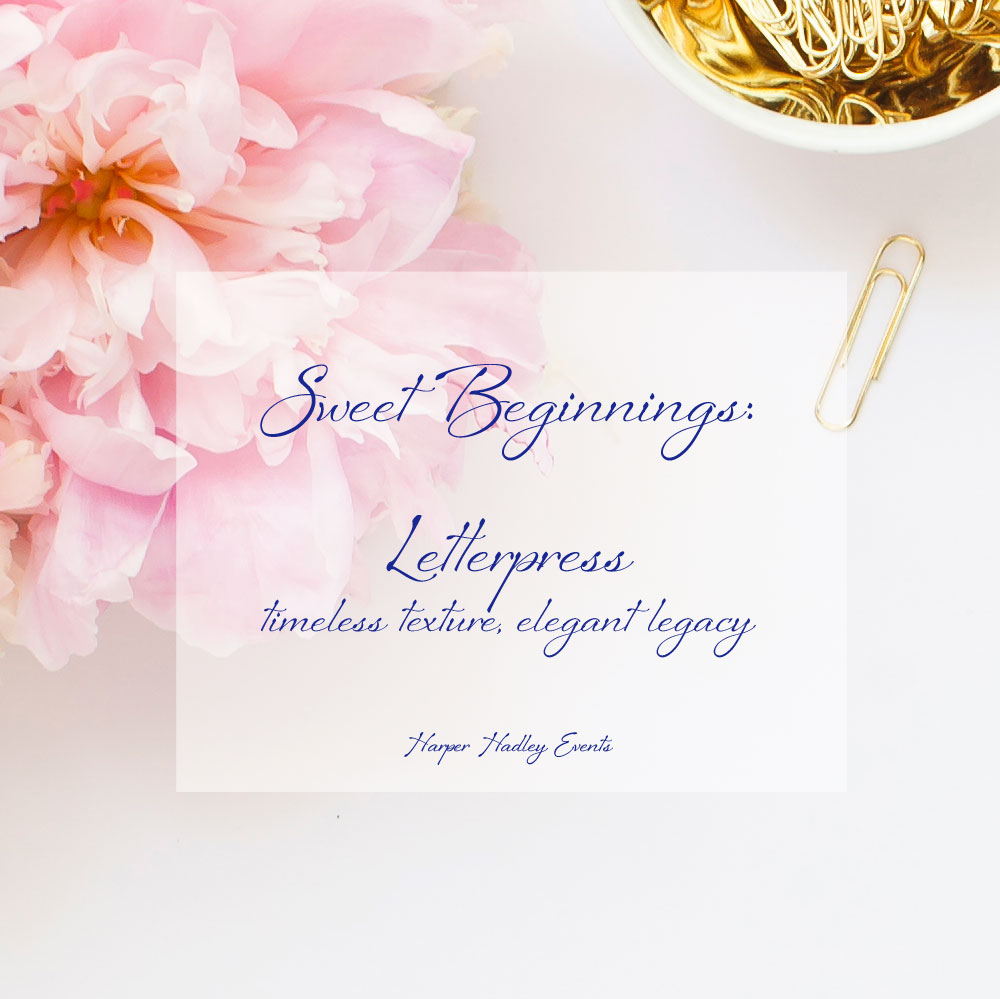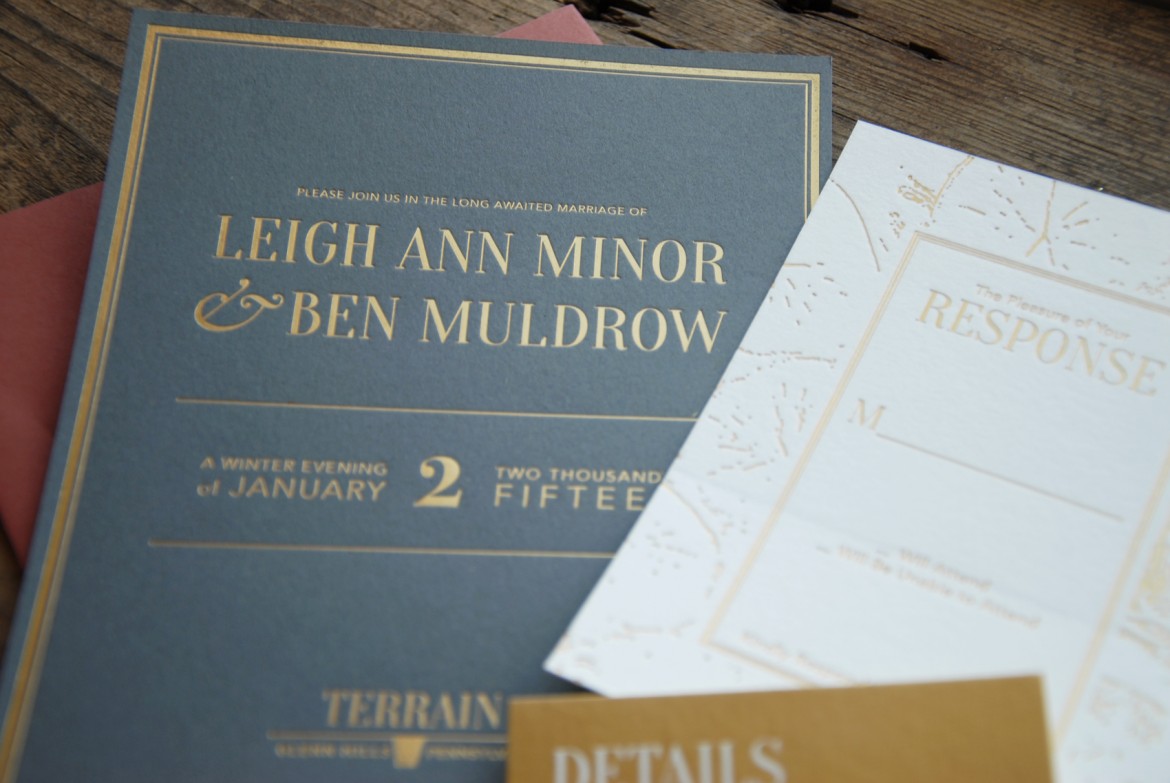When I was maybe six or seven, I so distinctly remember looking through my parents’ and grandparents’ wedding albums. I remember so vividly when my mom gently pulled their wedding invitation out of the sleeve in the front. How gingerly she held it and the smile on her face as she remembered the day they mailed them out and the life that has followed. It was early when I fell in love with love and marriage, but that was the day I started to love paper (along with pens, but that is a story for another day).
There is no magic formula or right answer when you choose your wedding paper, but it will always be a tangible piece of your new beginning that you can keep and share with your children and grandchildren. Over the last few weeks, we have discussed printing options and things to think about if you opt for custom designs. Something as simple as paper can get very overwhelming when you suddenly become aware of all the options. No matter what you choose, you cannot go wrong. Today I have Danielle back for one last installment to share about one of the most popular paper trends – Letterpress!
Tell me a bit about the process.
Letterpress is a type of printing that has been around since the 1500’s. Printed pieces are created with a relief printing method, meaning that the layout that is being printed is a raised surface. Ink rolls over the raised surface and is then imprinted into the paper. Up until the advent of lithography and offset printing, letterpress was a standard in the printing industry.
In the past, most letterpress printed work would be created with wood or metal type. While wood and metal type are still used in some applications today, new technology has allowed printers to take their designs from the computer to the letterpress process. Metal or polymer (a hard plastic) plates can be created from digital files. Much of the work we do in the studio is done in this manner.
Letterpress printing uses one ink color at a time. A two color wedding invitation will go through our press twice to achieve both colors. We can also do speciality ink colors, including metallic, neon, and white inks. Letterpress printing differs from offset and screenprinting by maximizing the relief printing process. The press can be adjusted to give an impression into the paper when printing. The plate will press into the paper, leaving a “debossed” effect. This effect is emphasized when using high quality papers. We typically use cotton papers that are very heavy weights that could not be sent through a digital press. Other speciality papers and substrates including wood, cork, leather, and coaster stocks can also be printed on via letterpress printing.
How would one go about custom letterpress? Does that change the timeline mentioned previously?
If you are considering letterpress, I would research vendors that specialize in letterpress printing for weddings. There are various types of letterpress companies and not all of them will do custom letterpress work.
When we work with new clients, we like to get to know the couple and make sure letterpress is a good fit. We like to chat with each couple (either in person or online) to learn more about their day. We pull paper swatches and samples to begin the design process. After a proof is created, there are two rounds of revisions included to finalize the look and details for the invite suite. Once the final proof is approved, everything moves into production.
Letterpress printing often does take longer than other types of printing because of the extra production and labor processes. Once we have final approval on the proof, production can take up to two-three weeks depending on our production schedule and the complexity of the project. It is always a good idea to have some extra time padded into the schedule so neither you or the stationer feels rushed.
What makes letterpress so special?
Letterpress printing has a quality that is unmatched in other types of printing. The feel of the cotton papers and the vibrant inks, along with the impression is an experience of its own. It really emphasizes the special nature of wedding invitations.
Why do you love it? What qualities make it a stand out for you?
I love the process and the craft behind letterpress printing. All of the presses in our studio were made before 1950 and can still produce beautiful results. The history behind these pieces, combined with utilizing new technology is something I truly love. I also love working with couples to create beautiful, custom pieces that exemplify their relationship and wedding day.
Are there any limits with letterpress that would make it a less desirable option for some brides?
Letterpress printing does have its limits. Photographs and large blocks of solid colors do not work well with letterpress. Typography and graphics are much more suited for letterpress. The number of colors can also be limiting with letterpress printing. Each color is another plate and another run in the press, which increases costs. Typically most invites we work on are one or two colors.
How many of you are letterpress brides? Do you envision your babes holding your invitation someday? I’d love to hear from you, sweet loves!
xoxo, Jenn


LIke it
pin it
tweet it
email it